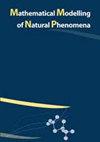流体不稳定性及其控制策略在微重力中的应用综述
IF 2.1
4区 数学
Q2 MATHEMATICAL & COMPUTATIONAL BIOLOGY
引用次数: 20
摘要
我们简要回顾了几种突出的流体不稳定性,这些不稳定性代表了由重力、表面张力、热能和施加的运动/加速度驱动的转变。讨论了控制这些不稳定性的策略,包括它们的图案形成特性。重力对于许多常见流体不稳定性的重要性被强调并用于理解微重力环境中流体有时显著不同的行为。使用最近的结果,对于冻结波不稳定性的情况,这一点得到了更详细的说明,在没有重力的情况下,冻结波不稳定会导致大的柱状结构。这些高度非线性状态的发展通常是复杂的,但可以通过适当选择强迫幅度、容器长度和高度、表面的初始倾斜度以及影响非线性和非均匀生长过程的其他参数来控制。人们注意到,通过微重力中的小作用力或参数变化来控制流体及其不稳定性的机会增加了。本文章由计算机程序翻译,如有差异,请以英文原文为准。
A review of fluid instabilities and control strategies with applications in microgravity
We give a brief review of several prominent fluid instabilities representing transitions driven by gravity, surface tension, thermal energy, and applied motion/acceleration. Strategies for controlling these instabilities, including their pattern formation properties, are discussed. The importance of gravity for many common fluid instabilities is emphasized and used to understand the sometimes dramatically different behavior of fluids in microgravity environments. This is illustrated in greater detail, using recent results, for the case of the frozen wave instability, which leads to large columnar structures in the absence of gravity. The development of these highly nonlinear states is often complex, but can be manipulated through an appropriate choice of forcing amplitude, container length and height, initial inclination of the surface, and other parameters affecting the nonlinear and inhomogeneous growth process. The increased opportunity for controlling fluids and their instabilities via small forcing or parameter changes in microgravity is noted.
求助全文
通过发布文献求助,成功后即可免费获取论文全文。
去求助
来源期刊

Mathematical Modelling of Natural Phenomena
MATHEMATICAL & COMPUTATIONAL BIOLOGY-MATHEMATICS, INTERDISCIPLINARY APPLICATIONS
CiteScore
5.20
自引率
0.00%
发文量
46
审稿时长
6-12 weeks
期刊介绍:
The Mathematical Modelling of Natural Phenomena (MMNP) is an international research journal, which publishes top-level original and review papers, short communications and proceedings on mathematical modelling in biology, medicine, chemistry, physics, and other areas. The scope of the journal is devoted to mathematical modelling with sufficiently advanced model, and the works studying mainly the existence and stability of stationary points of ODE systems are not considered. The scope of the journal also includes applied mathematics and mathematical analysis in the context of its applications to the real world problems. The journal is essentially functioning on the basis of topical issues representing active areas of research. Each topical issue has its own editorial board. The authors are invited to submit papers to the announced issues or to suggest new issues.
Journal publishes research articles and reviews within the whole field of mathematical modelling, and it will continue to provide information on the latest trends and developments in this ever-expanding subject.
 求助内容:
求助内容: 应助结果提醒方式:
应助结果提醒方式:


